
The Enchanting Connecticut River Valley
Discover the scenic beauty and rich history of the Connecticut River Valley, a perfect blend of outdoor adventure and charming small-town allure in the heart of New England.
Nestled in the heart of New England, the Connecticut River Valley is a picturesque haven for nature lovers and history enthusiasts alike. The valley stretches over 400 miles, offering a scenic escape with its rolling hills, lush forests, and charming small towns. As you explore, you'll encounter historic landmarks, quaint bed-and-breakfasts, and local wineries that add to the region's unique charm. Outdoor enthusiasts will find no shortage of activities to enjoy. The Connecticut River itself is perfect for boating, fishing, and kayaking. Meanwhile, the surrounding trails offer excellent opportunities for hiking and cycling, with breathtaking views around every corner. During the fall, the valley becomes a canvas of vibrant autumn colors, making it an ideal season for a visit. In addition to its natural beauty, the Connecticut River Valley is steeped in history. Towns like Essex and Old Saybrook boast well-preserved 18th and 19th-century architecture, offering a glimpse into America's colonial past. Museums, historic homes, and cultural events provide plenty of ways to immerse yourself in the local heritage. Whether you're seeking adventure or relaxation, the Connecticut River Valley promises an unforgettable experience.
Local tips in Connecticut River Valley
- Visit during the fall for the most stunning foliage views.
- Try the local wines at one of the valley's many vineyards.
- Take a river cruise to fully appreciate the valley's scenic beauty.
- Explore the historic towns of Essex and Old Saybrook for a taste of colonial America.
- Pack a picnic and enjoy it along the Connecticut River or at one of the many scenic overlooks.
The Enchanting Connecticut River Valley
Nestled in the heart of New England, the Connecticut River Valley is a picturesque haven for nature lovers and history enthusiasts alike. The valley stretches over 400 miles, offering a scenic escape with its rolling hills, lush forests, and charming small towns. As you explore, you'll encounter historic landmarks, quaint bed-and-breakfasts, and local wineries that add to the region's unique charm. Outdoor enthusiasts will find no shortage of activities to enjoy. The Connecticut River itself is perfect for boating, fishing, and kayaking. Meanwhile, the surrounding trails offer excellent opportunities for hiking and cycling, with breathtaking views around every corner. During the fall, the valley becomes a canvas of vibrant autumn colors, making it an ideal season for a visit. In addition to its natural beauty, the Connecticut River Valley is steeped in history. Towns like Essex and Old Saybrook boast well-preserved 18th and 19th-century architecture, offering a glimpse into America's colonial past. Museums, historic homes, and cultural events provide plenty of ways to immerse yourself in the local heritage. Whether you're seeking adventure or relaxation, the Connecticut River Valley promises an unforgettable experience.
When is the best time to go to Connecticut River Valley?
Iconic landmarks you can’t miss
Connecticut River Museum
Experience the rich history and natural beauty of the Connecticut River Valley at the Connecticut River Museum in Essex, CT.

Oliver Ellsworth Homestead
Discover the rich history of Oliver Ellsworth at his beautifully preserved homestead in Windsor, Connecticut, a must-visit for history lovers and tourists.

Unmissable attractions to see
Mystic Seaport Museum
Experience the maritime wonder of Mystic Seaport Museum, where history, art, and adventure converge along the beautiful Connecticut coastline.

Rocky Neck State Park
Explore Rocky Neck State Park, a stunning coastal gem in Connecticut, perfect for beach lovers, hikers, and campers alike.

Gillette Castle State Park
Experience the magic of Gillette Castle State Park, where history, architecture, and nature unite in a breathtaking setting.

Essex Steam Train & Riverboat
Explore the enchanting Essex Steam Train & Riverboat, where history meets scenic beauty along the Connecticut River.

Silver Sands State Park
Immerse yourself in nature at Silver Sands State Park, a coastal oasis featuring sandy beaches, scenic trails, and abundant wildlife in Milford, Connecticut.

Bluff Point State Park
Explore the breathtaking landscapes and outdoor adventures at Bluff Point State Park, a premier destination for nature lovers in Connecticut.

Connecticut Valley Railroad State Park
Experience the tranquil beauty and rich history at Connecticut Valley Railroad State Park, a perfect escape for nature lovers and history buffs alike.

Talcott Mountain State Park
Explore the breathtaking views and diverse trails of Talcott Mountain State Park in Simsbury, Connecticut – a perfect nature escape for all outdoor enthusiasts.

Riverfront Park
Discover the beauty and tranquility of Riverfront Park in Glastonbury, Connecticut, where nature meets recreation for all ages.

Chatfield Hollow State Park
Explore the breathtaking landscapes and serene trails of Chatfield Hollow State Park in Killingworth, Connecticut, a perfect destination for nature lovers.

Case Mountain
Discover the tranquil beauty of Case Mountain, a premier park in Manchester, Connecticut, perfect for outdoor adventures and family outings.

Valley Falls Park
Experience the natural beauty and adventure of Valley Falls Park in Vernon, CT, with its scenic trails, waterfalls, and family-friendly atmosphere.

Fort Griswold Battlefield State Park
Discover the rich history and serene landscapes of Fort Griswold Battlefield State Park in Groton, CT, a must-visit destination for every traveler.

Heublein Tower
Explore Heublein Tower, a historic landmark offering stunning views and rich history in the heart of Connecticut.

Cockaponset State Forest
Discover the breathtaking landscapes and outdoor adventures at Cockaponset State Forest, a top destination for nature lovers in Connecticut.
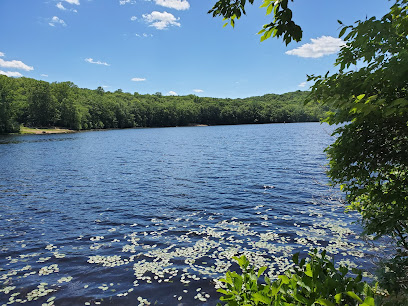
Essential places to dine
The Cheesecake Factory
Discover a delightful dining experience at The Cheesecake Factory in West Hartford, where American classics meet heavenly cheesecakes.

Sugar Factory - Foxwoods
Discover Sugar Factory at Foxwoods - Where American cuisine meets extravagant desserts in a fun-filled atmosphere perfect for families and friends.

LongHorn Steakhouse
Experience the best of American cuisine at LongHorn Steakhouse in Shelton with delicious steaks and a warm family-friendly atmosphere.
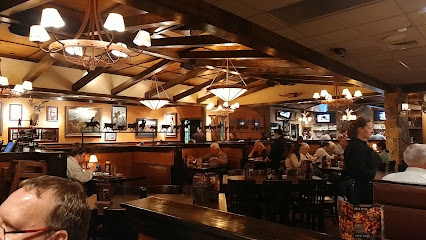
Stonebridge Restaurant
Experience exquisite seafood dining at Stonebridge Restaurant in Milford, CT - where every meal is a celebration of local flavors and stunning views.

River: A Waterfront Restaurant and Bar
Discover River: A Waterfront Restaurant and Bar—where culinary excellence meets picturesque riverside dining in Wethersfield.

Max's Oyster Bar
Discover Max's Oyster Bar in West Hartford - where fresh oysters meet fine dining in a sophisticated yet inviting atmosphere.

bartaco
Experience mouthwatering tacos and refreshing drinks at Bartaco in Westport - a perfect blend of flavor and ambiance.
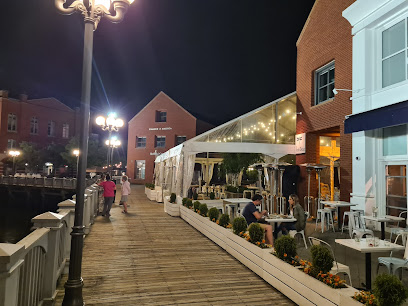
Ruth's Chris Steak House
Experience the ultimate in fine dining at Ruth's Chris Steak House—where every meal is a celebration of flavor and elegance.

Texas de Brazil - Hartford
Experience the vibrant flavors of Brazilian cuisine at Texas de Brazil - Hartford, where exceptional steaks meet exquisite service.

Pagliacci's Restaurant
Discover the taste of Italy at Pagliacci's Restaurant - a cozy haven in Plainville serving delicious pizzas and classic pasta dishes.

Max Downtown
Experience fine dining at its best at Max Downtown in Hartford—where exquisite flavors meet elegant ambiance.

Market Place Kitchen & Bar
Experience culinary excellence at Market Place Kitchen & Bar in Woodbury - where organic meets indulgent in a sophisticated setting.
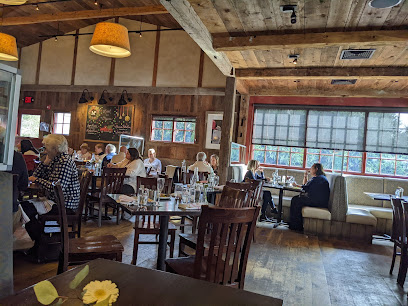
Luce Restaurant
Experience authentic Tuscan cuisine at Luce Restaurant in Middletown - where traditional flavors meet local charm.

@ The Barn Restaurant
Experience delightful American cuisine at The Barn Restaurant in Granby – where rustic charm meets exceptional flavors.

Max a Mia Ristorante
Experience authentic Italian cuisine at Max a Mia Ristorante in Avon - where every meal feels like a special occasion.

Markets, malls and hidden boutiques
Olde Mistick Village
Experience the unique charm of Olde Mistick Village, where shopping, dining, and picturesque scenery come together in the heart of Mystic, Connecticut.

Blue Back Square
Discover Blue Back Square: A premier shopping mall in West Hartford, CT, blending retail, dining, and entertainment in a lively atmosphere.

The Shops at Evergreen Walk
Discover a delightful blend of shopping, dining, and entertainment at The Shops at Evergreen Walk in South Windsor, CT.

Westbrook Outlets
Discover unbeatable deals and a delightful shopping experience at Westbrook Outlets, Connecticut's premier outlet mall.

The Shops at Farmington Valley
Discover a shopper's haven at The Shops at Farmington Valley, where diverse retail, dining, and leisure options create the perfect outing experience.

Heirloom Market at Comstock Ferre
Discover the essence of local flavors at Heirloom Market, where artisanal coffee and organic goods blend harmoniously in Wethersfield.

Connecticut River Museum
Explore the maritime heritage of the Connecticut River at the Connecticut River Museum, where history and nature come alive in Essex, CT.

Mariella Creations
Explore Mariella Creations in Rocky Hill, CT, for exquisite bridal gowns and personalized service in a dreamy bridal shopping experience.

River Valley Provisions
Explore River Valley Provisions, the perfect grocery store for tourists in Haddam, offering local flavors and unique gourmet selections.

Bestemors
Explore Bestemors Gift Shop: A Treasure Trove of Unique Souvenirs and Local Artistry in Mystic, Connecticut.

Hadlyme Country Market
Discover the flavors of Hadlyme at Hadlyme Country Market, where local ingredients meet artisanal delights in a charming setting.

Higganum Village Market
Explore Higganum Village Market for fresh produce and local specialties in a charming grocery store setting.
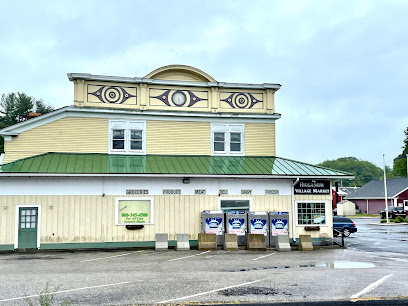
Soulbury Cultural Gifts Store
Explore the charm of Soulbury Cultural Gifts Store in Woodbury, CT - where unique handcrafted treasures await every visitor.
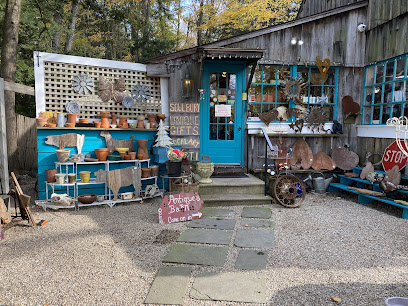
Riverside Mall Inc
Explore Riverside Mall Inc in Gales Ferry, CT: Your ultimate shopping destination with diverse stores and delightful dining experiences.

Connecticut Valley Tobacconist
Explore Connecticut Valley Tobacconist: a tobacco haven in Enfield with premium cigars and accessories for enthusiasts and newcomers alike.

Essential bars & hidden hideouts
Black-Eyed Sally's Southern Kitchen & Bar
Discover the vibrant Southern flavors and live music at Black-Eyed Sally's in Hartford, where every meal is a celebration of culinary tradition.

The Flying Monkey Grill & Bar
Discover a vibrant dining experience at The Flying Monkey Grill & Bar, where exquisite flavors and unique cocktails await in Newington, CT.

The Yarde Tavern
Experience the heart of American dining at The Yarde Tavern in Enfield, where hearty meals and craft beers await in a welcoming atmosphere.

River: A Waterfront Restaurant and Bar
Experience the perfect blend of fine dining and scenic views at River: A Waterfront Restaurant and Bar in Wethersfield, Connecticut.

Abigail's Grille and Wine Bar
Experience the best of New American cuisine at Abigail's Grille and Wine Bar in Weatogue, Connecticut, where culinary creativity and elegance meet.

Eli Cannons Tap Room
Experience the best of craft beer and delicious cuisine at Eli Cannons Tap Room, a top brewpub in Middletown, Connecticut.
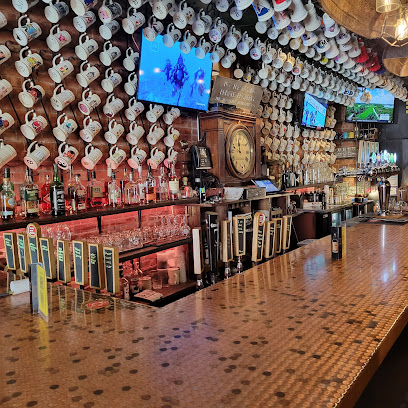
Burtons Grill & Bar
Discover Burtons Grill & Bar in South Windsor, CT - a vibrant spot for American cuisine with gluten-free options and a lively bar atmosphere.

Millwright's Restaurant
Discover the exquisite flavors of New England at Millwright's Restaurant, where rustic charm meets innovative cuisine in the heart of Simsbury, CT.

Republic Gastropub
Experience the perfect blend of gourmet cuisine and relaxed pub atmosphere at Republic Gastropub in Bloomfield, CT.

Dive Bar & Restaurant
Dive Bar & Restaurant in West Haven offers a vibrant Caribbean dining experience with grilled specialties and stunning ocean views, perfect for every tourist.

Five Corners Bistro & Craft Bar
Discover the flavors of New American cuisine at Five Corners Bistro & Craft Bar, a must-visit gastropub in Farmington.

The Beamhouse
Experience the essence of New American cuisine at The Beamhouse, where farm-to-table freshness meets vibrant cocktails in Glastonbury.

Pigs Eye Pub
Experience the lively spirit of Hartford at Pigs Eye Pub, where great food, drinks, and entertainment come together in a cozy downtown setting.

Rooftop 120
Experience unforgettable dining and breathtaking views at Rooftop 120, the perfect gastropub in Glastonbury for food lovers and event seekers.

Birch Hill Tavern
Experience the warmth of American cuisine at Birch Hill Tavern, Glastonbury's favorite destination for comfort food and local flavors.

Local Phrases about Connecticut River Valley
-
- HelloHowdy
[haʊ-di] - GoodbyeSee ya later
[siː jə ˈleɪ.tər] - YesYep
[jɛp] - NoNah
[nɑː] - Please/You're welcomePlease/No problem
[pliːz / noʊ ˈprɑː.bləm] - Thank youThanks a bunch
[θæŋks ə bʌntʃ] - Excuse me/SorryPardon me/My bad
[ˈpɑːr.dən miː / maɪ bæd] - How are you?How's it goin'?
[haʊz ɪt ˈɡoʊɪn] - Fine. And you?Just dandy. You?
[dʒʌst ˈdændi jʊ] - Do you speak English?Ya talk English?
[jɑː tɑːk ˈɪŋ.ɡlɪʃ] - I don't understandI ain't catchin' on
[aɪ eɪnt ˈkætʃɪn ɒn]
- HelloHowdy
-
- I'd like to see the menu, pleaseLemme take a gander at the menu, if you please
[ˈlɛmi teɪk ə ˈɡændər ət ðə ˈmɛnjuː ɪf jʊ pliːz] - I don't eat meatI don't do meat
[aɪ doʊnt duː mit] - Cheers!Cheers!
[ʧɪrz] - I would like to pay, pleaseI reckon I'll settle up now
[aɪ ˈrɛkən aɪl ˈsɛtəl ʌp naʊ]
- I'd like to see the menu, pleaseLemme take a gander at the menu, if you please
-
- Help!Help!
[hɛlp] - Go away!Get lost!
[ɡɛt lɔst] - Call the Police!Ring the cops!
[rɪŋ ðə kɒps] - Call a doctor!Get a doc!
[ɡɛt ə dɑk] - I'm lostI'm turned around
[aɪm tɜrnd əˈraʊnd] - I'm illI'm feelin' under the weather
[aɪm ˈfiːlɪn ˈʌndər ðə ˈwɛðər]
- Help!Help!
-
- I'd like to buy...I'm lookin' to purchase...
[aɪm ˈlʊkɪn tə ˈpɜːrʧəs] - I'm just lookingI'm just browsin'
[aɪm dʒʌst ˈbraʊzɪn] - How much is it?What's the damage?
[wɑːts ðə ˈdæm.ɪdʒ] - That's too expensiveThat's a bit steep
[ðæts ə bɪt stip] - Can you lower the price?Can ya knock a few bucks off?
[kæn jə nɑk ə fjuː bʌks ɔf]
- I'd like to buy...I'm lookin' to purchase...
-
- What time is it?What's the clock say?
[wɑːts ðə klɒk seɪ] - It's one o'clockIt's one on the dot
[ɪts wʌn ɒn ðə dɒt] - Half past (10)Half past (10)
[hæf pæst] - MorningMornin'
[ˈmɔːrnɪn] - AfternoonArvo
[ˈɑːvəʊ] - EveningEvenin'
[ˈiːvnɪn] - YesterdayYest'day
[ˈjɛst.deɪ] - TodayToday
[təˈdeɪ] - TomorrowTomorrow
[təˈmɑːr.oʊ] - 1One
[wʌn] - 2Two
[tuː] - 3Three
[θriː] - 4Four
[fɔːr] - 5Five
[faɪv] - 6Six
[sɪks] - 7Seven
[ˈsɛv.ən] - 8Eight
[eɪt] - 9Nine
[naɪn] - 10Ten
[tɛn]
- What time is it?What's the clock say?
-
- Where's a/the...?Where's the...
[ˈwɛəz ðə] - What's the address?What's the addy?
[wɑːts ðə ˈæd.i] - Can you show me (on the map)?Can ya point it out (on the map)?
[kæn jə pɔɪnt ɪt aʊt ɒn ðə mæp] - When's the next (bus)?When's the next (bus)?
[wɛnz ðə nɛkst] - A ticket (to ....)A ticket (to ....)
[ə ˈtɪkɪt]
- Where's a/the...?Where's the...
History of Connecticut River Valley
-
Long before European settlers arrived, the Connecticut River Valley was home to various Indigenous tribes, including the Pequot, Mohegan, and Nipmuc peoples. These tribes thrived in the region, benefiting from its rich resources such as fertile soil, abundant game, and access to the river for fishing and transportation. The arrival of Dutch and English settlers in the early 17th century marked the beginning of significant changes for the native populations, leading to conflicts and eventual displacement.
-
In 1633, the Dutch established a trading post called 'House of Hope' near present-day Hartford, marking the first European settlement in the Connecticut River Valley. Soon after, English settlers led by Reverend Thomas Hooker arrived and founded Hartford in 1636. The town quickly became a focal point for governance, trade, and culture in the region. Hartford's establishment laid the groundwork for the Connecticut Colony, which played a crucial role in the broader colonial history of New England.
-
In 1639, the Connecticut River Valley saw the creation of the Fundamental Orders of Connecticut, often considered one of the first written constitutions in the Western world. Drafted by settlers in the towns of Windsor, Hartford, and Wethersfield, the document established a framework for self-governance that influenced the development of democratic principles in the United States. The Fundamental Orders emphasized the community's right to govern itself through elected representatives and laid the foundation for Connecticut's political structure.
-
The Connecticut River Valley played a significant role during the American Revolution. Towns along the river, such as Hartford, Middletown, and New London, became centers for military planning, supply depots, and recruitment. The region's agricultural productivity and manufacturing capabilities provided essential resources for the Continental Army. Notably, the Connecticut River facilitated the movement of troops and supplies, making it a strategic asset for the revolutionary cause.
-
The 19th century brought significant industrial growth to the Connecticut River Valley. The river's power was harnessed to drive mills and factories, leading to the rise of industries such as textiles, firearms, and clocks. Towns like Hartford, Windsor Locks, and Middletown became industrial hubs, attracting a diverse workforce and fostering economic development. The valley's industrial heritage is still evident today in its historic mills, factories, and industrial architecture.
-
In the latter half of the 20th century, the Connecticut River Valley became a focal point for environmental conservation efforts. Pollution from industrial activity had severely impacted the river's health. Grassroots organizations, along with state and federal initiatives, worked to clean up the river and restore its ecosystem. These efforts have led to significant improvements in water quality and wildlife habitats, making the Connecticut River a model for successful environmental restoration.
-
The Connecticut River Valley has long been a center for culture and education. Institutions such as Yale University in New Haven and Trinity College in Hartford contribute to the region's intellectual and cultural vibrancy. The valley is also home to numerous museums, theaters, and cultural organizations that celebrate its rich history and diverse heritage. Annual events, such as the Riverfest celebration and agricultural fairs, highlight the valley's ongoing cultural significance.
Connecticut River Valley Essentials
-
The Connecticut River Valley is easily accessible by several modes of transportation. The nearest major airport is Bradley International Airport (BDL) in Windsor Locks, which is centrally located within the state. From the airport, you can rent a car, take a taxi, or use shuttle services to reach your destination within the valley. Amtrak also provides train services with stations in Hartford and New Haven, making it convenient to travel from other parts of the Northeast. If you prefer driving, Interstates 91 and 95 run through the region, connecting it to neighboring states.
-
Once in the Connecticut River Valley, you have various options for getting around. Renting a car offers the most flexibility, especially if you plan to explore multiple towns and attractions. Local bus services are available in cities like Hartford and New Haven, and they connect to smaller towns. CTtransit operates bus routes throughout the region. Biking is also a popular option, with numerous scenic trails along the river. For short distances within town centers, walking is both feasible and enjoyable.
-
The official currency in Connecticut is the US Dollar (USD). Credit and debit cards are widely accepted in most establishments, including hotels, restaurants, and shops. ATMs are readily available throughout the valley for cash withdrawals. It's advisable to carry some cash for small purchases or in rural areas where card payment might not be an option.
-
The Connecticut River Valley is generally a safe area for tourists. However, it is recommended to exercise standard precautions. Avoid walking alone at night in unfamiliar or poorly lit areas. Cities like Hartford have some neighborhoods with higher crime rates; areas like North End should be approached with caution, especially after dark. Always keep your belongings secure and be aware of your surroundings.
-
In case of emergency, dial 911 for immediate assistance. The region has numerous hospitals and medical facilities, including Hartford Hospital and Yale New Haven Hospital, both of which are highly regarded. Pharmacies are plentiful and can provide over-the-counter medications. It is advisable to have travel insurance that covers medical emergencies. For non-emergency issues, walk-in clinics and urgent care centers are available.
-
Fashion: Do dress in layers, as the weather can be unpredictable. Comfortable walking shoes are a must for exploring. Avoid overly casual attire in upscale dining establishments. Religion: Do respect local customs if visiting religious sites. Remove hats and speak softly. Public Transport: Do be punctual and respectful to drivers and other passengers. Avoid loud conversations. Greetings: Do greet people with a smile and a handshake. In more casual settings, a simple 'hi' or 'hello' works. Eating & Drinking: Do try local specialties like New England clam chowder and Connecticut-style lobster rolls. Don't forget to tip, as it is customary in the U.S.
-
To experience the Connecticut River Valley like a local, consider visiting farmers' markets for fresh produce and artisanal goods. The Hartford Regional Market is a great spot to start. Take a scenic river cruise to see the valley from a unique perspective. Engage with locals in small-town diners or coffee shops, where you can hear stories about the area's rich history. Don't miss the annual events like the Riverfest in Hartford or the Haddam Neck Fair for a taste of local culture. For outdoor enthusiasts, hiking trails such as the Metacomet Trail offer breathtaking views and a chance to connect with nature.
Nearby Cities to Connecticut River Valley
-
Things To Do in Meriden
-
Things To Do in New Britain
-
Things To Do in New Haven
-
Things To Do in Hartford
-
Things To Do in West Hartford
-
Things To Do in Westerly
-
Things To Do in Waterbury
-
Things To Do in Milford
-
Things To Do in Montauk
-
Things To Do in Bridgeport
-
Things To Do in Block Island
-
Things To Do in East Greenwich
-
Things To Do in Narragansett
-
Things To Do in Danbury
-
Things To Do in Norwalk













